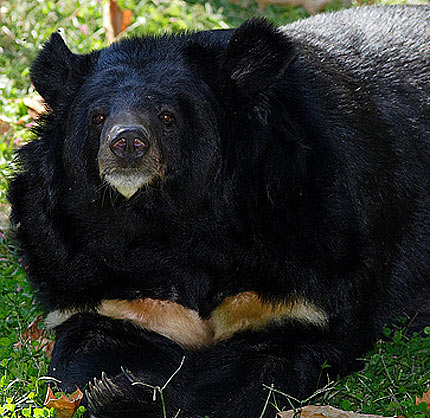Asian Black Bear – Moon, White Chested Bear
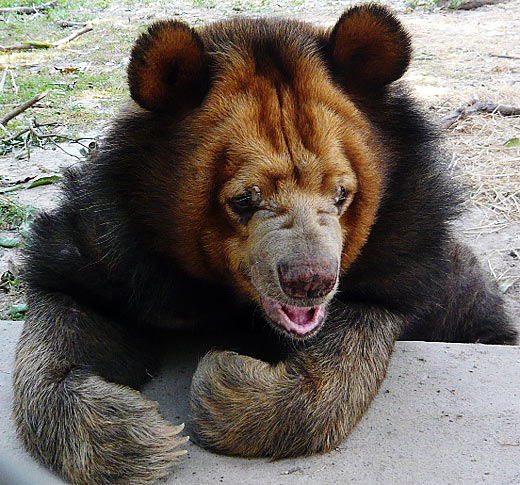
Once described by author/world traveler Rudyard Kipling as “the most bizarre of the ursine species” because of the frequency of their unprovoked attacks on humans despite primarily being herbivores; the tree-dwelling Asian Black Bear has also been called the moon bear and the white-chested bear. The Asian black bear can be found throughout the deciduous forests, deserts, mixed forests, and thorn-brush forests of southern Asia, Korea, northeastern China, Russia, and the Honshu and Shikoku islands of Japan; they’re almost never found at elevations greater than 12,000 feet (3,700 m).
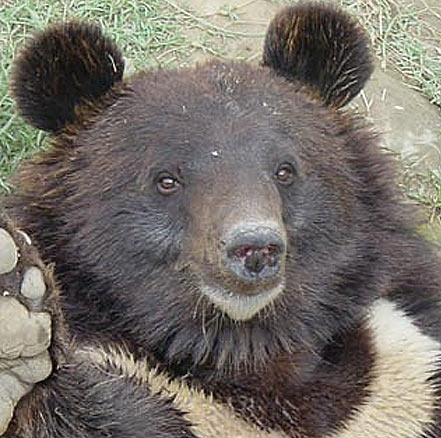
The bears are somewhat easily distinguished from other bears by the white patch on their stomachs and strange build (their bodies are adapted for a life in the trees, and thus they have large upper-bodies and smaller, somewhat weak, lower-bodies; so much so, that one with two broken hind legs can still climb effectively), Asian black bears measure 28-40 in (10-100 cm) in shoulder height, 47-77 in (120-195 cm) in body length, and weigh of about 143-330 lbs (65-150 kg).
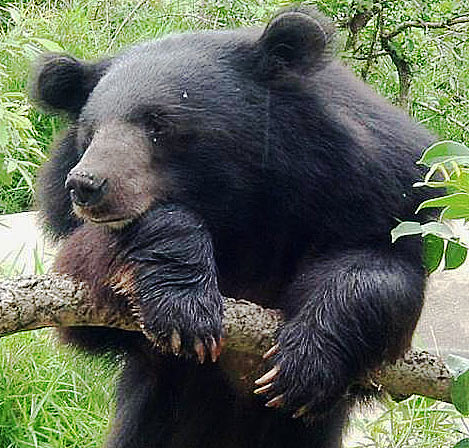
An Asian black bear’s diet usually consists of insects, beetle larvae, invertebrates, termites, grubs, carrion, bees, eggs, garbage, mushrooms, grasses, fruits, nuts, seeds, honey, herbs, acorns, cherries, dogwood, oak nuts and grains; but they will occasionally eat monkeys or dead fish in times of famine. Despite their size, strength, and prime spot up in the trees, they are still preyed upon by leopards, wolves, tigers, and dholes.
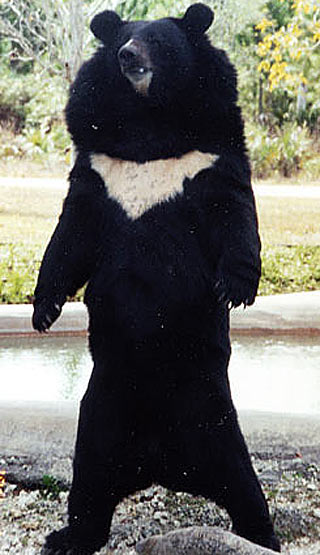
As a result of deforestation , poaching (for their skin and gallbladders), and bile-bear farming (“bile-bears” are kept in tiny cages and milked for their stomach acids, which are believed to have a medicinal effect in some Asian cultures; this is usually done in horrid, life-threatening conditions), Asian black bears are a species currently considered vulnerable for extinction.
